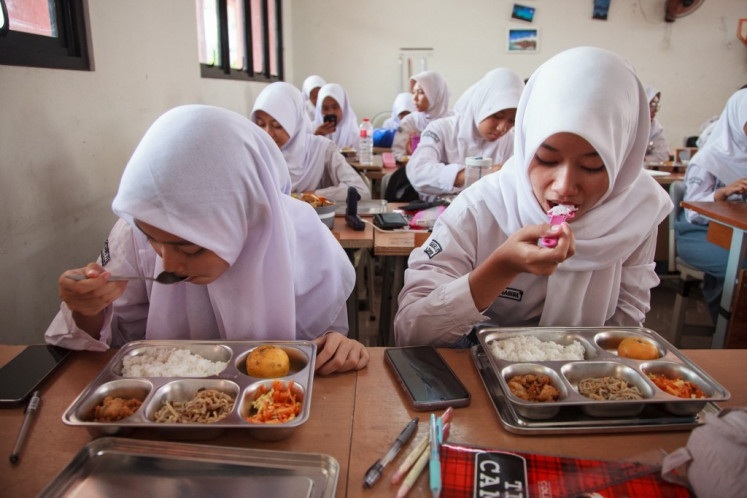Popular Reads
Top Results
Can't find what you're looking for?
View all search resultsPopular Reads
Top Results
Can't find what you're looking for?
View all search resultsMany locals spend more than their gains
A large section of Indonesian consumers spend more money than their monthly income in order to create the facade of an affluent lifestyle to buy social status making them prone to bankruptcy, according to a recent survey
Change text size
Gift Premium Articles
to Anyone
A
large section of Indonesian consumers spend more money than their monthly income in order to create the facade of an affluent lifestyle to buy social status making them prone to bankruptcy, according to a recent survey.
The survey by Kadence Indonesia has found that the trend will seemingly continue in the following years indicating growing consumerism in society.
'Lifestyle and pressure from society have driven these consumers to spend a lot of money,' Kadence Indonesia deputy managing director Rajiv Lamba said on Wednesday.
Nearly one fourth of Indonesian consumers spend more money than they had, he said.
The survey conducted from July through October this year involved 3,000 respondents in Greater Jakarta, Surabaya (East Java), Medan (North Sumatra), Balikpapan (East Kalimantan) and Makassar (South Sulawesi), among others.
The main purpose of the survey was to compile data on average incomes, spending and savings of consumers living in big cities and rural area.
The survey reveals that 28.3 percent of total respondents or the 'broke' consumers had spent more than their income, which eventually prompted them to borrow money at the end of the month to pay their debts.
'Most of these 'broke' consumers are not necessarily poor or economically backward,' he said. 'These people want to live an affluent lifestyle, which requires them to spend more money.'
Rajiv added that the 'broke' consumers, with an average income of Rp 4.3 million, spent more money than other consumers on non-basic necessities, such as vacations, arisan (social gatherings), house maintenance and paying off loans.
Meanwhile, 33.3 percent of the 'on the edge' consumers had the lowest average income of Rp 3.9 million but were still able to save their money at the end of the month even though the amount was not big, he said.
The smallest group were in the category of 'pragmatic' consumers, which only accounted for 17.1 percent of total respondents. Rajiv said that these consumers were the most realistic people, who know how to live their life proportionately.
The survey also shows that the percentage of 'deep pocket' consumers with average incomes of Rp 8.8 million and average savings of Rp 4.3 million accounted for 21.3 percent. (tam)










